Related Research Articles
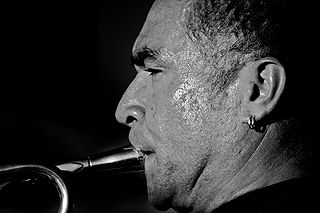
Embouchure or lipping is the use of the lips, facial muscles, tongue, and teeth in playing a wind instrument. This includes shaping the lips to the mouthpiece of a woodwind instrument or the mouthpiece of a brass instrument. The word is of French origin and is related to the root bouche, 'mouth'. Proper embouchure allows instrumentalists to play their instrument at its full range with a full, clear tone and without strain or damage to their muscles.

Aerobic exercise is physical exercise of low to high intensity that depends primarily on the aerobic energy-generating process. "Aerobic" is defined as "relating to, involving, or requiring oxygen", and refers to the use of oxygen to meet energy demands during exercise via aerobic metabolism adequately. Aerobic exercise is performed by repeating sequences of light-to-moderate intensity activities for extended periods of time. Aerobic exercise may be better referred to as "solely aerobic", as it is designed to be low-intensity enough that all carbohydrates are aerobically turned into energy via mitochondrial ATP production. Mitochondrion are organelles that rely on oxygen for the metabolism of carbs, proteins, and fats. Aerobic exercise causes a remodeling of mitochondrial cells within the tissues of the liver and heart.
Autogenic training is a desensitization-relaxation technique developed by the German psychiatrist Johannes Heinrich Schultz by which a psychophysiologically determined relaxation response is obtained. The technique was first published in 1932. Studying the self-reports of people immersed in a hypnotic state, J.H. Schultz noted that physiological changes are accompanied by certain feelings. Abbé Faria and Émile Coué are the forerunners of Schultz. The technique involves repetitions of a set of visualisations that induce a state of relaxation and is based on passive concentration of bodily perceptions, which are facilitated by self-suggestions. The technique is used to alleviate many stress-induced psychosomatic disorders.
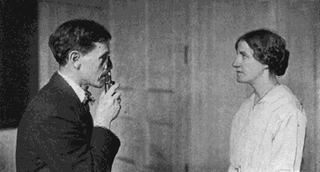
The Bates method is an ineffective and potentially dangerous alternative therapy aimed at improving eyesight. Eye-care physician William Horatio Bates (1860–1931) held the erroneous belief that the extraocular muscles effected changes in focus and that "mental strain" caused abnormal action of these muscles; hence he believed that relieving such "strain" would cure defective vision. In 1952, optometry professor Elwin Marg wrote of Bates, "Most of his claims and almost all of his theories have been considered false by practically all visual scientists."

Pilates is a type of mind-body exercise developed in the early 20th century by German physical trainer Joseph Pilates, after whom it was named. Pilates called his method "Contrology". It is practiced worldwide, especially in countries such as Australia, Canada, South Korea, the United States and the United Kingdom. As of 2005, there were 11 million people practicing the discipline regularly and 14,000 instructors in the United States.
High-intensity training (HIT) is a form of strength training popularized in the 1970s by Arthur Jones, the founder of Nautilus. The training focuses on performing quality weight training repetitions to the point of momentary muscular failure. The training takes into account the number of repetitions, the amount of weight, and the amount of time the muscle is exposed to tension in order to maximize the amount of muscle fiber recruitment.
Joseph Hubertus Pilates was a German-born physical trainer, credited with inventing and promoting the Pilates method of physical fitness.

Plyometrics, also known as jump training or plyos, are exercises in which muscles exert maximum force in short intervals of time, with the goal of increasing power (speed-strength). This training focuses on learning to move from a muscle extension to a contraction in a rapid or "explosive" manner, such as in specialized repeated jumping. Plyometrics are primarily used by athletes, especially martial artists, sprinters and high jumpers, to improve performance, and are used in the fitness field to a much lesser degree.

Pehr Henrik Ling pioneered the teaching of physical education in Sweden. Ling is credited as the father of Swedish massage.

Margaret Morris was a British dancer, choreographer, artist and teacher. She founded the Margaret Morris Movement, Celtic Ballet, and two Scottish National Ballets in Glasgow (1947) and in Pitlochry (1960). Morris devised a system of movement notation, which was first published in 1928.

Brian Sterling-Vete is an English author, Guinness World Record Holder, motivational speaker, TV broadcaster, Director, Stage, Film and Television actor, stunt performer, martial arts expert, fitness expert and entrepreneur.
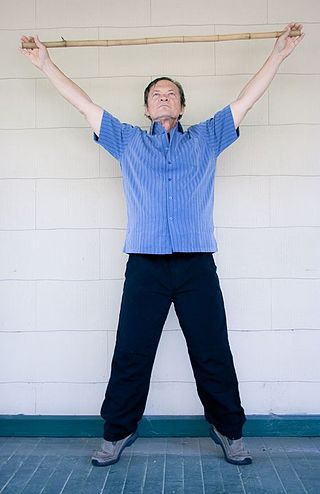
Chinese Wand (Jiangan) Exercise or Chinese Health Wand is an obscure ancient exercise system, related to the martial art Kung Fu. The "wand" in Chinese Wand Exercise is a 48-50" long dowel, 1" in diameter,, used as a fulcrum for balance, form and posture. "It’s the pyramid effect, with you as center." "Seventeen gentle bending, twisting and lunging movements flow in exact order, specially designed to get the blood circulating more efficiently throughout the body. These exercises are done in gradual, easy ‘Stages’ while using an original Chinese deep-breathing technique" and chi energy, and can be easy or more challenging as the individual chooses.
A mathematical exercise is a routine application of algebra or other mathematics to a stated challenge. Mathematics teachers assign mathematical exercises to develop the skills of their students. Early exercises deal with addition, subtraction, multiplication, and division of integers. Extensive courses of exercises in school extend such arithmetic to rational numbers. Various approaches to geometry have based exercises on relations of angles, segments, and triangles. The topic of trigonometry gains many of its exercises from the trigonometric identities. In college mathematics exercises often depend on functions of a real variable or application of theorems. The standard exercises of calculus involve finding derivatives and integrals of specified functions.

Monte Saldo was an early bodybuilder who later, with his brothers Frank Saldo and Edwin Woollaston, formed the stage act The Montague Brothers, in which they displayed acts of strength including supporting a heavy motor car complete with passengers. With Maxick, he developed the Maxalding system of muscle control.

The Montague Brothers was a strongman act of the early twentieth century made up of the three Woollaston brothers, Edwin John Woollaston (1876-1918), Alfred Montague Woollaston, and Frank Harold Woollaston. In the act, the Brothers displayed acts of strength including supporting a heavy motor car complete with passengers and 'The Sculptor's Dream'.

Frank Saldo was an early bodybuilder, and with his brothers Monte Saldo and Edwin Woollaston was a member of the strongman act The Montague Brothers in the early twentieth century.
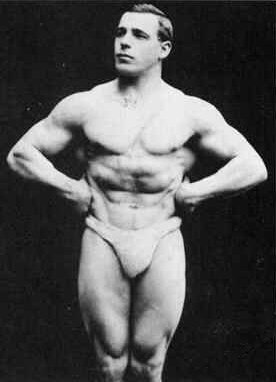
Max Sick was a German strongman and gymnast who performed as Maxick. With Monte Saldo, he developed the Maxalding system of bodybuilding through muscle control.
Louie Simmons was an American powerlifter and strength coach. He was active as a powerlifter and coach for more than fifty years. Simmons was the founder of Westside Barbell and has developed several training protocols, including the "Conjugate Method". He is also credited with inventing training machines for reverse hyper-extensions and belt squats. In the US powerlifting community he was referred to as the "Godfather of powerlifting".
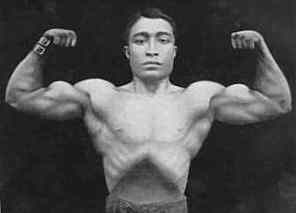
Bishnu Charan Ghosh was an Indian bodybuilder and Hathayogi. He was the younger brother of yogi Paramahansa Yogananda, who wrote the 1946 book Autobiography of a Yogi. In 1923, he founded the College of Physical Education, Calcutta. His writings influenced the development of modern yoga as exercise in India and Bikram Choudhury founded Bikram Yoga based on his teachings.
Katharina Schroth was born in Dresden, Germany with scoliosis. Her treatment path was to wear thoracic braces to try to fix her diagnosis. She was sick of wearing the braces and over her lifetime found ways to use breathing techniques and different manipulation processes using pulley systems and different stretches to fix the scoliosis. She had started two different institutes that taught and used these techniques to other individuals who also had scoliosis. The first was in opened in 1921 and was called Breathing Orthopedics and was in Meissen Germany. The second institute opened was in Sobernheim. The techniques used are now known as the Schroth Method and are still implemented today. The Schroth method helped to change the way of healing scoliosis and set the precedent for how other techniques were developed. For this work, Schroth was awarded the Federal Cross of Merit by the Federal Republic of Germany. These institutes were passed down to her daughter, Christa Lehnert-Schroth, and to her daughter’s son, Dr. Hans-Rudolf Weiss, MD. Her grandson is still alive and has his own practice of where he uses modifications of his grandmother’s techniques to help those with scoliosis today.
References
- ↑ Maxick (1913). Muscle Control, or Body Development by Will-Power. London: Ewart, Seymour & Co. p. 7. Retrieved 22 May 2017.